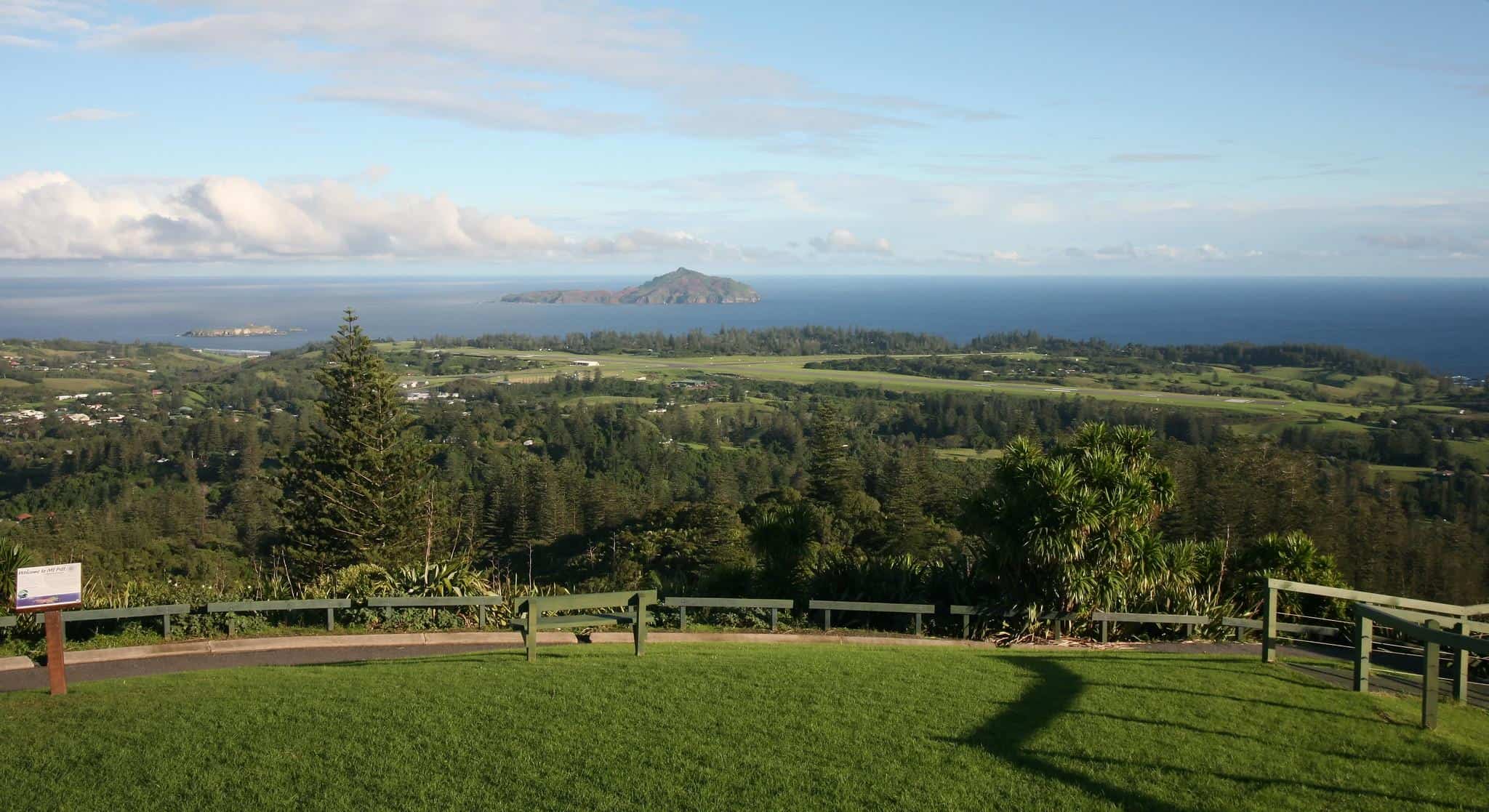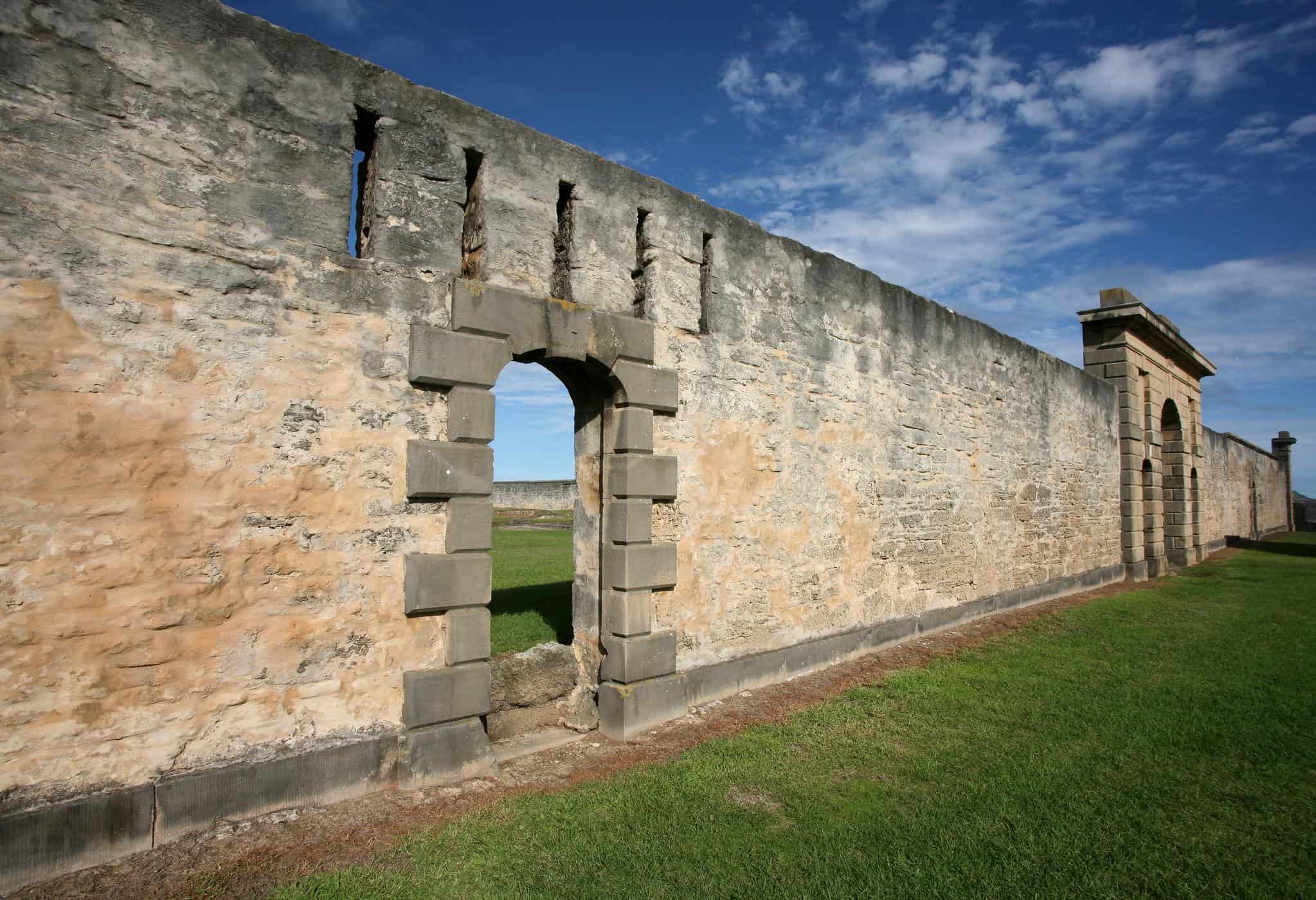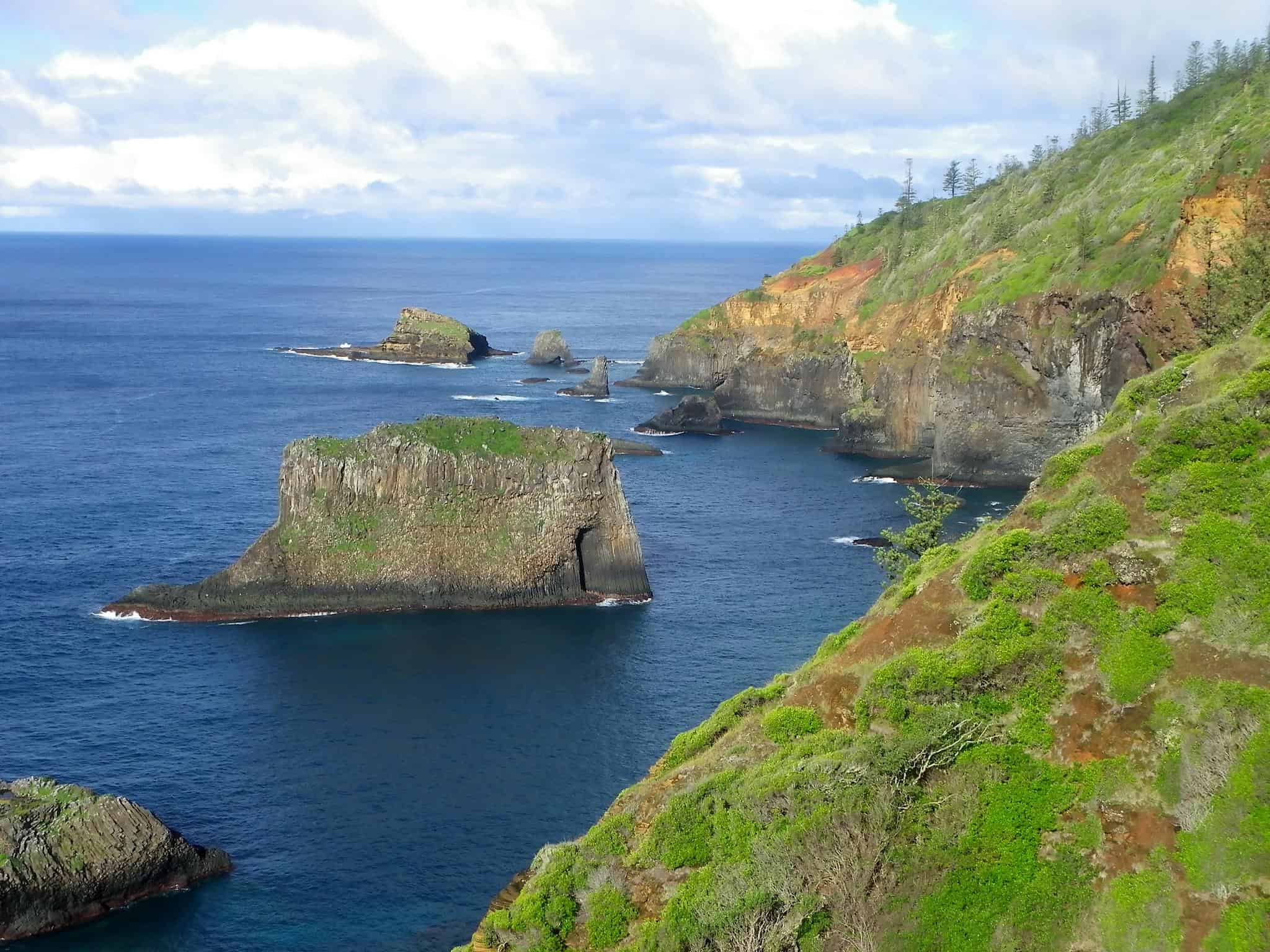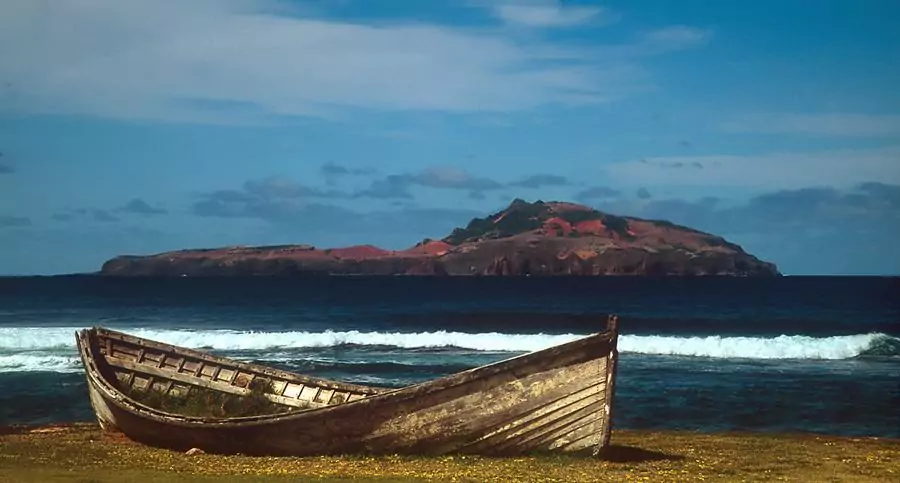
Only few places around the world are as mysterious and remote, yet tourist-friendly as the Norfolk Island. Tucked away on the South Pacific Ocean between Australia and New-Zealand, the Norfolk Island is one of three external territories of Australia and a former penal settlement of the British Empire. While not many travelers actually visit the Island, it has a surprisingly decent tourist infrastructure, making it a fascinating getaway to fearlessly explore, even for easy goers.
Officially Norfolk Island National Park encompasses a large part of the main island, Phillip Island and the small Nepean Island, however, the most accessible and visited section is by far the area around Mount Pitt on the northwest side of the island.
Covered by a thick plethora of vegetation, the park is home to unique fauna and flora, including some endemic species to the island, most notably the Norfolk tree fern, also known as the tallest tree-fern in the world, and the Norfolk Pine, which is embedded in the local flag, a clear sign for its enormous significance for the islanders.
Several walking trails link points of interest within the park like glades and hilly peaks, one of which is the marvelous Mount Pitt lookout, offering a scenic panorama of the Island. Another place worth visiting is the botanic gardens, located at the end of Grassy road, the gardens feature pathways through a dense forest made of local plants accompanied by educational signs, culminating in a deck balcony overlooking the gardens and the Discovery Center which provides a glimpse for the island’s bird species.
The relatively low number of visitors to the Island guarantees a pleasant and peaceful time while walking around the park, unlike many heavily visited nature gems around the world, fueled by the Instagram-rush.

The green slopes of Norfolk Island from Mt.Pitt
photography by: bertknot
Surprising as it might sound, Norfolk Island has a rich history dating back to centuries ago, and nowhere it’s more present than in Kingston Historic Area, a medley of relics from three different eras recognized by UNESCO as a world heritage site.
First colonized by Polynesian tribes somewhere around the 14th century, the settlement known today as Kingston was abandoned shortly after due to the island’s poor soil and meager agricultural output, leaving few archaeological sites around Kingston as silent evidence.
A more recent part of Kingston are the remains of the two penal settlements, established by the British Empire, as a measure of isolating convicts, some of which traded the death penalty with spending the rest of their life on the island.
The penal settlement was decamped at mid-18th, followed by the third and last wave of colonization, consisting of Pitcairn islanders, the descendants of the HMS Bounty mutineers and their Tahitian wives, who run out of space at the extremely isolated island of Pitcairn, inhabiting most of the buildings left by the British settlers and prisoners.
Nowadays, some of the edifices like the former military barracks are almost intact while the only surviving part of the notoriously famous Norfolk Gaol is its perimeter wall, perhaps the most iconic man-made structure in Norfolk Island.

Norfolk Gaol perimeter wall
photography by: bertknot
A small speck in the vastness of the ocean, Norfolk Island is overwhelmingly dominated by the presence of the Pacific Ocean, engulfing it from each and every side.
Thus, it should come as no surprise that most breathtaking places in the island are where its craggy green surface gracefully meets the ocean, making it the perfect nook for an afternoon picnic or a sunset watching.
All ocean lookouts are charming, yet few stand out more than others, noticeably Captain Cook lookout, commemorating the landing place of Captain James Cook, the first European who discovered the Island in 1774 and named it after the Duchess of Norfolk. Nestled at the end of Duncombe Bay Rd, the lookout is marked by a cairn in honor of Captain Cook and offers a spectacular vista of nearby Duncombe Bay.
Another interesting lookout is Headstone point, on the southwestern part of the island, interestingly, until recently Norfolk residents used to get rid of their old dysfunctional vehicles by running them off this cliff, straight into the ocean. For the time being, this quaint habit is longer practiced, leaving the stunning views solely for tourists, some of which take advantage of the scenic landscape for drawing and sketching.

The view from Captain Cook lookout
photography by: bertknot
Almost all of Norfolk Island 32 kilometers of coastline are rocky and steep, yet one striking exception is Anson Bay on the northwestern side of the Island, just off Anson bay road. This beautifully secluded cove is not only magnificent by itself, but also due to its scenic surrounding cliffs and jutting boulders on the ocean.
Anson Bay Reserve is multi-level, topographically speaking, consisting of both a green plateau, the beach itself and the slope connecting the two, therefore it’s wise to allocate time for each part, appreciating its virgin beauty.
The shore is not accessible for vehicles, so the only way to get there is by a narrow grassy path, bridging almost 100 meters of height. On your way downwards it’s possible to see the cliffy side enclosing the bay, which is covered by cylinder shaped columns made of slowly cooled basalt lava, remnants of the era when the whole island was an active volcano, roughly 2-3 million years ago.
Once at the beach, you can enjoy the golden soft sand and even dip a leg or two in the water, albeit swimming is not recommended due to the strong currents around the bay. Since Anson bay has facilities like picnic tables and barbecue area, it’s quite enjoyable to spend at least half a day in the reserve.

Anson Bay, Norfolk Island
photography by: Pxfuel.com
Despite being dominated by Norfolk’s main island, the territory of Norfolk Island as it’s known collectively is in fact an archipelago consisting of three islands, two of which are uninhabited, Nepean Island and Phillip Island, whereas the latter is considered a hotspot for ultra-adventurous travelers.
Unlike its shadow casting sibling, Phillip Island is rugged, reddish and even yellow, partly due to erosion of soil caused by the introduction of pests like rabbits and pigs, albeit nowadays the local endemic flora is slowly recovering, thanks to intensive conservation efforts and the eradication of invasive animal species. Furthermore, as a result of the absence of land predators, the island became a breeding epicenter for rare ground-nesting sea birds, providing an unusual glimpse for nature lovers.
Considering its remoteness and unpredictable sea conditions around, any visit to the island requires extensive preplanning and guidance through Norfolk Island Visitors Information Centre, making it a true trophy only for the dedicated ones. If you do manage to book a journey, keep in mind that the trip demands a reasonable physical ability since the island’s upper level is accessible only by a series of ropes and ladders, succeed by intensive hilly treks of its surface.

A view of Phillip Island from Norfolk Island
photography by: Pxfuel.com
Officially, there are no municipal borders in Norfolk Island, yet couple of distinct settlements are spread out throughout the island, the largest of which is Burnt Pine, functioning both as the commercial and cultural heart of the island.
Norfolk Island unique culture is well reflected in every aspect of Burnt Pine town life, giving travelers the opportunity to experience the islanders mundane daily life first hand.
At first glance, Burnt Pine might seem like a dull place, however, further delving will lead into a different conclusion, surprisingly interesting and vibrant.
Norfolk islanders are known for their hospitality and friendliness, and there is no better place to enjoy it than in one of Burnt Pine’s pubs, like the RSL memorial club, a popular meeting spot for natives and tourists alike, providing the perfect chance to engage in a conversation with locals about their culture and history while sipping a cheap Australian wine on a backdrop of war memorabilia, a tribute for islanders who served in the army.
Except for the basic commercial and public services along Taylor Road, the town’s main street, Burnt Pine hosts two weekly markets, the farmers market at Saturday (07:00-09:30), offering fresh local products like fruits, vegetables, herbs and even yoghurt, whereas the art & craft market on Sundays (08:30-11:00), is where you can find local craft items, souvenirs, jewelries and etc accompanied by food and coffee stalls with live entertainment. Both markets are held in the Bicentennial Complex on Taylor Road.

The main street of Burnt Pine
photography by: denisbin